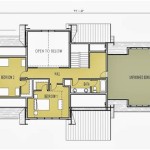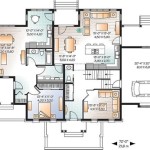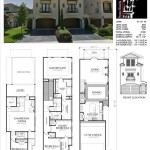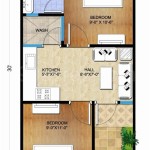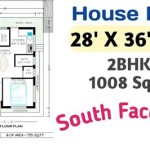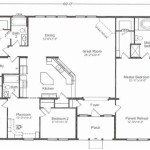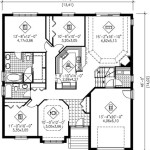Floor Plan Tiny House Designs: Maximizing Space and Minimizing Footprint
Tiny house living has emerged as a significant architectural and lifestyle trend, driven by factors such as affordability, environmental concerns, and a desire for simplified living. Designing a tiny house effectively requires careful consideration of the floor plan, as every square inch must be utilized efficiently to create a functional and comfortable living space. This article explores various aspects of tiny house floor plan designs, focusing on strategies for maximizing space, incorporating essential amenities, and catering to different lifestyle needs.
Understanding the Core Principles of Tiny House Design
The foundation of successful tiny house design lies in understanding the core principles that govern space optimization and functionality. These principles dictate how various elements of the house are arranged and integrated to ensure a comfortable and livable environment, despite the limited square footage. Prioritization is paramount. Potential tiny house dwellers must meticulously evaluate their needs and wants, distinguishing between essential amenities and superfluous items. This process directly influences the floor plan, determining which features are included and how much space is allocated to each.
Multifunctional furniture represents another crucial principle. Items that serve multiple purposes are invaluable in a tiny house. For example, a sofa bed provides seating during the day and transforms into a sleeping area at night. Similarly, a dining table that can be folded away when not in use maximizes floor space. Storage solutions must also be carefully planned. Vertical storage, such as shelves and cabinets extending to the ceiling, is highly effective in utilizing otherwise wasted space. Built-in storage integrated into the structure of the house, such as drawers under the bed or benches with storage compartments, further enhances space efficiency.
Natural light plays a vital role in making a tiny house feel more spacious and airy. Large windows and skylights allow ample sunlight to enter, creating a bright and welcoming atmosphere. Strategic window placement can also offer views of the surrounding landscape, connecting the interior with the outdoors and enhancing the sense of openness. Careful consideration must be given to window placement to balance natural light with privacy and energy efficiency.
Key Considerations for Effective Floor Plan Layouts
Several key considerations influence the design of effective tiny house floor plan layouts. These factors encompass the overall shape of the house, the arrangement of rooms, and the integration of various functionalities to create a cohesive and comfortable living space. The overall shape of the tiny house significantly impacts the floor plan. Rectangular designs are generally the most common, as they offer efficient use of space and ease of construction. However, other shapes, such as square or even geodesic dome designs, can be explored, each presenting unique challenges and opportunities for space optimization.
The arrangement of rooms within the tiny house is crucial for functionality and flow. An open-concept layout, where the living area, kitchen, and dining area are combined into a single space, is a popular choice for tiny houses. This arrangement maximizes the feeling of spaciousness and allows for greater flexibility in furniture arrangement. However, some individuals may prefer to have separate rooms for privacy or noise reduction. In such cases, strategic use of partitions or sliding doors can create flexible divisions without significantly compromising space.
The kitchen is often a central focus in tiny house design. Compact appliances are essential, including a smaller refrigerator, a two-burner stove, and a combination microwave-convection oven. Creative storage solutions, such as pull-out pantries and vertical shelving, are crucial for organizing cookware and food items. The bathroom is another area where space optimization is paramount. A composting toilet can save water and eliminate the need for a septic system. A shower stall, rather than a bathtub, is typically preferred to conserve space. A small sink and mirror complete the bathroom setup.
Sleeping arrangements in tiny houses often involve innovative solutions. Loft beds are a common choice, utilizing the vertical space above the living area or kitchen. However, lofts can be challenging for individuals with mobility issues or those who prefer a low-profile sleeping arrangement. In such cases, a ground-floor bedroom, even if small, can provide a more comfortable and accessible option. Alternatively, a Murphy bed, which folds away into the wall when not in use, can free up floor space during the day.
Specific Floor Plan Examples and Their Features
Various tiny house floor plan examples showcase different approaches to space optimization and functionality. These examples illustrate how the principles of tiny house design can be applied to create diverse and livable spaces tailored to different needs and preferences. One common floor plan features a loft bedroom accessible by a ladder or narrow staircase, a compact kitchen with essential appliances, a living area with multifunctional furniture, and a small bathroom. This layout is suitable for individuals or couples who are comfortable with loft living and prioritize maximizing floor space in the main living area.
Another floor plan example incorporates a ground-floor bedroom, which can be particularly appealing to older individuals or those with mobility limitations. This layout often features a smaller living area and kitchen to accommodate the bedroom, but it provides a more comfortable and accessible sleeping arrangement. It might also feature increased storage solutions throughout to compensate for the space taken by the bedroom.
A third floor plan option focuses on outdoor living, with a large deck or patio area extending the living space outdoors. This design is ideal for individuals who enjoy spending time outdoors and want to maximize their connection with nature. The interior of the tiny house may be more compact, but the outdoor space provides additional room for relaxation, dining, and entertaining. The design emphasizes a transition between indoor and outdoor living, blurring the lines between the two spaces.
Different architectural styles can also influence the floor plan of a tiny house. For example, a modern tiny house may feature clean lines, minimalist decor, and an open-concept layout. In contrast, a rustic tiny house may incorporate reclaimed materials, exposed beams, and a more traditional layout with separate rooms. The architectural style should reflect the owner's personal taste and complement the surrounding environment.
The choice of materials also plays a significant role in the design of a tiny house floor plan. Lightweight materials are preferred to minimize weight, especially if the tiny house is designed to be mobile. Sustainable and eco-friendly materials, such as reclaimed wood, bamboo flooring, and recycled insulation, are becoming increasingly popular choices. These materials not only reduce the environmental impact of the tiny house but also contribute to a healthier and more comfortable living environment.
Integrating smart home technology can further enhance the functionality and convenience of a tiny house. Smart lighting systems, programmable thermostats, and voice-activated assistants can automate various tasks and conserve energy. Smart appliances, such as a combination washer-dryer or a tankless water heater, can also save space and energy. The incorporation of technology should be carefully considered to ensure it enhances the living experience without adding unnecessary complexity.
Ultimately, the best tiny house floor plan design is the one that best suits the individual's needs, lifestyle, and budget. Careful planning, creative problem-solving, and a willingness to embrace minimalist living are essential for creating a functional, comfortable, and aesthetically pleasing tiny house. As the tiny house movement continues to grow, innovative floor plan designs will undoubtedly emerge, further expanding the possibilities for small-space living.

Tiny House Plan Examples

Tiny House Floor Plans With Lower Level Beds Tinyhousedesign

Tiny House Plan Examples

Tiny Home Floor Plan Gallery Robin Sheds

4 Free Tiny House Floor Plans And Designs You Can Follow Realestate Com Au

Family Tiny House Design Tinyhousedesign

Tiny House Floor Plan Idea
How To Draw A Tiny House Floor Plan The Home

Tiny Home Floor Plan Gallery Robin Sheds

4 Free Tiny House Floor Plans And Designs You Can Follow Realestate Com Au

